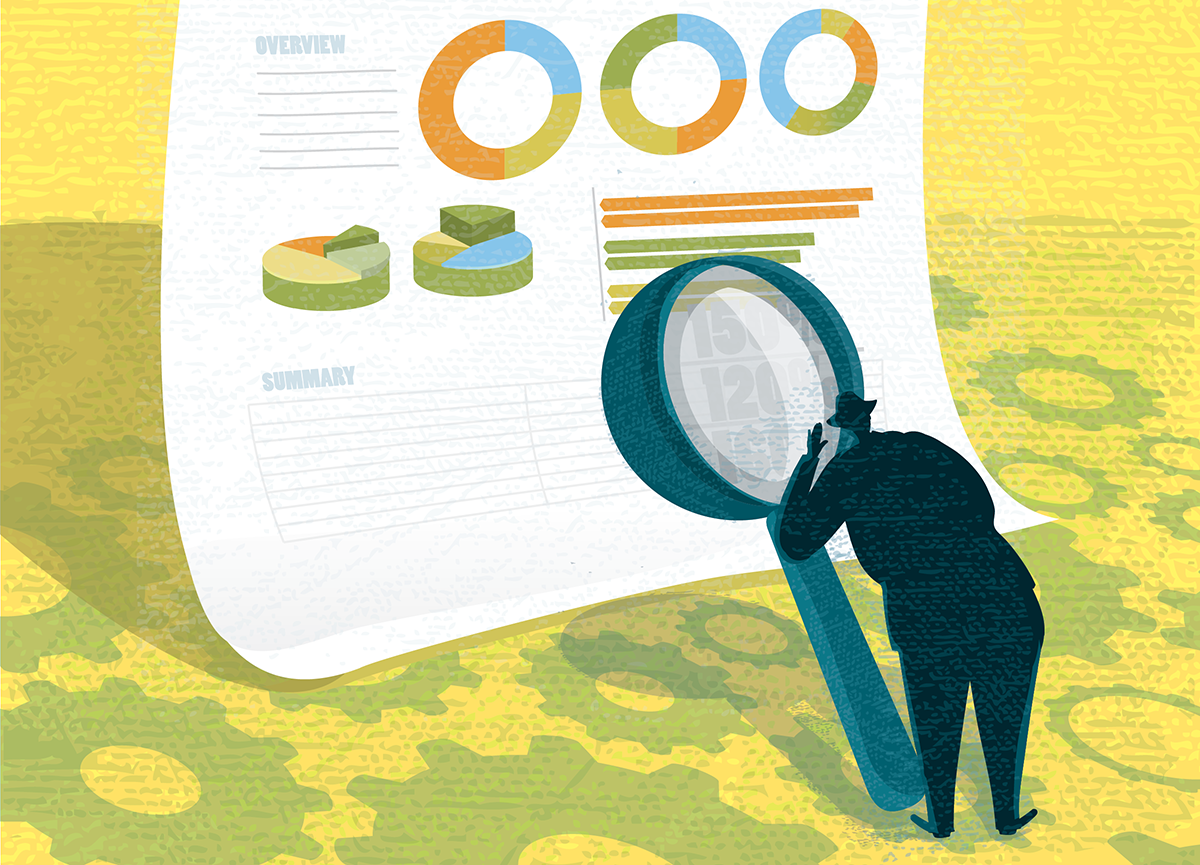
In 2016, the Financial Accounting Standards Board (FASB) released a new set of lease-accounting standards that require companies to change how they report on their operating leases. Instead of mentioning leases only in the footnotes of their filings, they will now need to report a right-of-use asset and a lease liability on the balance sheet for each operating lease. This change was a result of a U.S. Securities and Exchange Commission (SEC) initiative to close accounting loopholes and increase transparency into the financial position of companies.
The new lease-accounting standards are known as ASC 842, and public companies are required to apply them for annual reporting periods after December 15, 2018. For public companies with a fiscal-year start on the first of the year, that means their deadline will be January 1, 2019. Private companies will be required to apply the standards for annual periods after December 15, 2019—one year later.
The SEC also now requires companies to file Staff Accounting Bulletin (SAB) 74 disclosures describing the expected impact of any new accounting standard. With regard to ASC 842, the SAB 74 disclosures provide insight into companies' preparedness for implementing the new lease-accounting standards. We recently reviewed quarterly and annual SAB 74 disclosures issued over the past year by 100 companies with high operating-lease obligations, with the goal of gauging their progress and better understanding keys to success in implementing the ASC 842 standard.
Impact on Corporate Financial Statements
The first thing we found is that many of these companies still have a way to go to full implementation of the ASC 842 standard. Few provided much information in their SAB 74 disclosures, which is not surprising since we still have several months till the standard's effective date. However, a handful of companies offered good examples of what needs to be disclosed, as well as insights into how they are approaching the project.
Of the 100 companies whose disclosures we evaluated, more than three-quarters have determined that the new lease-accounting standard will have a material impact on their balance sheets, but few have provided a quantitative estimate of it. Among those that have quantified the impact, estimates range from $1.2 billion to $13 billion per company.
At the time of their SAB 74 disclosures, most companies were still evaluating the impacts that ASC 842 will have on their income and cash flow statements—but among those that had finished the process, the vast majority said there would be no impact to either.
Eventually, all companies will need to determine and report the exact material impact that ASC 842 will have on their balance sheet. Doing so will involve a long data-collection process with few shortcuts. Given that most companies are used to reporting their leases off-balance-sheet, many have never needed to track leasing data closely. Pulling operating leases onto the balance sheet will require companies to keep much more detailed data in order to ensure that the right-of-use assets and lease liabilities are calculated correctly. For example, any data fields concerning payments; expenses; or end-of-term options like renewal, buyout, or return could impact the lease's valuation.
To streamline the data-collection process and arrive at the balance sheet impact of ASC 842 as efficiently as possible, companies should analyze the new standards and their software requirements to figure out what new data they will need to collect and have on hand. After making these lists, many companies will realize that some of the necessary data is not on their lease agreements, so they will have to go to the asset users or even the lessors to complete their datasets. By knowing ahead of time exactly what data they will need, companies can avoid having to frantically track down information at the last minute.
Implementation Status
In our research, we found that only 13 percent of companies have formed a project team. This is one of the most crucial aspects of implementing the lease-accounting standards because rollout of the leasing standards, unlike many accounting projects, is an enterprisewide undertaking. Successful implementation will require a cross-functional team made up of representatives from all the business units that touch leasing, including procurement, accounts payable (A/P), treasury, corporate IT, and users of the leased assets.
These representatives will not only help track down the lease agreements, but also provide insights into designing the future leasing program; developing processes that will enable the company to efficiently collect and report the necessary information; choosing among practical expedients that the FASB has offered to help some companies streamline implementation; and selecting leasing software. For example, an A/P representative can help the project team track down leases by providing a list of all payments made monthly, quarterly, or yearly. However, A/P will also be concerned with establishing processes to ensure that all lease payments are made on time but are not continued past the end of the lease's term.
Corporate treasury will play a significant role in the ASC 842 implementation project as well, as treasury owns the balance sheet. Now that many major companies are expecting a significant increase in assets and liabilities on the balance sheet, many treasury organizations will be focused on optimizing the use of capital in the leasing program. As a result, treasury will be heavily involved in establishing updated controls around processes like the lease-vs.-buy analysis and sourcing of leased assets. Treasury also owns the relationship with many of the potential lessors (vendors and landlords) that the company may lease from in the future, adding an important perspective to designing controls.
The project will also require an executive sponsor to secure the necessary budget and advocate for the importance of the project. Some business functions may not understand why the project is so crucial, or why they should dedicate resources from their group to help complete the project. The executive sponsor will be responsible for getting the proper approvals to make the project a success. The chief accounting officer would be a good choice for this role.
Practical expedients. One of the crucial decisions the project team will need to make is which practical expedients to select. For example, one practical expedient has been dubbed the “package of three.” It grants lessees the option to avoid the reassessment of whether existing contracts contain a lease, the classification of those leases, and the initial direct costs of those leases. Another practical expedient lets lessees decide whether to separate lease components and non-lease components. (A non-lease component is a good or service that is not directly related to paying for the right to use the asset on lease, like the operating costs of a building.) The FASB also recently granted an option for lessees to not apply the transition provision to the comparative period, which would mean they would not need to restate their financial statements from the prior two years.
The choice of practical expedients could ultimately impact the size of the increase to the balance sheet, software requirements, and policy updates, as well as the time required to implement the standard. However, only 11 percent of the organizations in our study commented in their SAB 74 disclosures that they have selected or are evaluating the practical expedients the FASB has offered.
The practical expedients are designed to ease implementation, but companies cannot assume that every practical expedient will be right for them. The project team will need to weigh the pros and cons of each option as it relates to their industry and company. What might make sense for one company could result in an unwanted impact for another.
Software selection. Due to the scale of the leasing project, most major companies will need to select a lease-accounting software application to automate their leasing processes. However, according to the disclosures we reviewed, only 18 percent of companies claim to have evaluated, selected, or implemented a software solution.
A lease-accounting system helps companies generate the reports and disclosures required by the new lease-accounting standards. Unlike spreadsheets, a complete lease-accounting solution can automate many of the processes involved with calculating the right-of-use assets and lease liabilities, reducing the risk and cost of manual entry and calculation. Lease-accounting systems are also capable of accounting for both equipment and real estate leases, so they cannot be easily replaced by real estate administration software.
The basic features that all lease-accounting solutions should have are: first, a lease-accounting subledger that can collect all the necessary data at the asset level as required by the new standards; second, a lease-accounting engine that can generate debits and credits at the asset level and aggregate them to the schedule level; third, automatic lease classification; fourth, financial disclosures and reporting for ASC 842, as well as IFRS 16 if the company reports internationally; and finally, responsibility and management accounting.
The first step the project team should take in the software selection process is determining a list of requirements their system has to have, as well as features that would be nice to have. This effort needs to heavily involve IT staff, who can develop security and integration requirements, as well as the accounting team, who can develop technical accounting requirements.
Policies and controls. To achieve compliance with the new lease-accounting standards by the implementation date and to maintain compliance in the future, companies will have to update their leasing policies and controls. According to the SAB 74 disclosures we looked at, 18 percent of companies have begun evaluating or are implementing new policies and controls.
While the current focus of most companies is, understandably, on collecting and uploading lease data, it's also crucial for organizations to begin establishing updated policies that will allow them to maintain the same level of data in the future, while also withstanding the increased auditor scrutiny of the new standard. For example, companies can incentivize asset users to regularly update the lease database with any changes to an asset. Organizations can establish key performance indicators (KPIs) that measure critical success factors of the leasing program and can assign the KPIs to stakeholders to track progress.
The treasury team can play a role in establishing policies and controls designed to help optimize the company's use of its capital. For example, they may want to require that asset requests above a certain dollar value go through treasury for approval. Moreover, treasury can take control of the lease-vs.-buy decision process for these high-dollar asset requests, in order to ensure that the company is choosing the best option in terms of cash flow and long-term business needs. Treasury managers can also use their relationships with potential lessors to ensure that leases are sourced competitively.
Inserting treasury expertise into decisions around these policies and controls will help optimize the use of capital in the company and reduce the unnecessary costs of the leasing program. Saving money on the leasing program can help make up for some of the costs associated with the implementation project.
5 Steps Underlying a Successful ASC 842 Implementation
The SAB 74 disclosures in our study show that companies are beginning to understand the significant material impact the new lease-accounting standards will have on their balance sheet. The first implementation deadlines are still several months away, so many organizations have not yet elaborated on the steps they are taking to determine the impact. However, in the coming quarters, we expect SAB 74 disclosures to provide more insight into how these projects are unfolding, as well as the potential impacts to company processes, systems, and balance sheets.
Based on our analysis of the top 100 companies as determined by operating lease obligation, the companies that provided the most information on their implementation projects are doing the following:
- They have provided an estimate for the material impact from transferring right-of-use assets and lease liabilities to the balance sheet.
- They have established a cross-functional project team to tackle these standards.
- They have evaluated which practical expedients will work best for their company.
- They have evaluated, selected, and/or implemented a lease-accounting software system.
- They have considered updates to processes, policies, and controls around leasing.
If the implementation initiative is built on these five fundamentals, the company will be prepared to take control of the implementation project and avoid mistakes that would increase the burden of the already overwhelming standards.
 Michael Keeler is the CEO, president, and founder of LeaseAccelerator. An expert in lease accounting and administration, he has been the primary force behind the growth and vision for LeaseAccelerator since 2003. Michael has more than 20 years of experience building software businesses. Prior to joining LeaseAccelerator, he was the president of Onmark Corporation and founder of both DataZen and Ecologic Corporation.
Michael Keeler is the CEO, president, and founder of LeaseAccelerator. An expert in lease accounting and administration, he has been the primary force behind the growth and vision for LeaseAccelerator since 2003. Michael has more than 20 years of experience building software businesses. Prior to joining LeaseAccelerator, he was the president of Onmark Corporation and founder of both DataZen and Ecologic Corporation.
© 2025 ALM Global, LLC, All Rights Reserved. Request academic re-use from www.copyright.com. All other uses, submit a request to [email protected]. For more information visit Asset & Logo Licensing.




